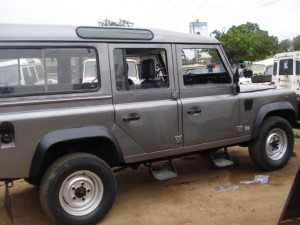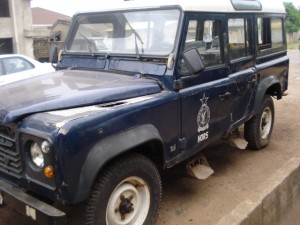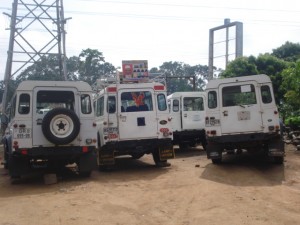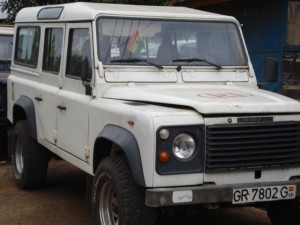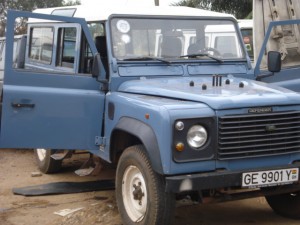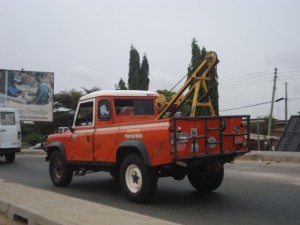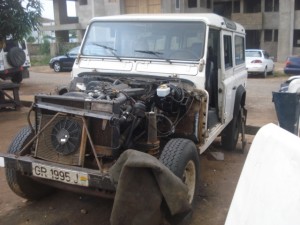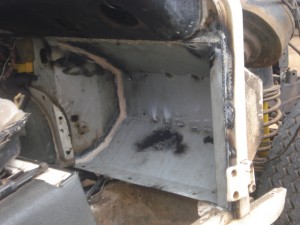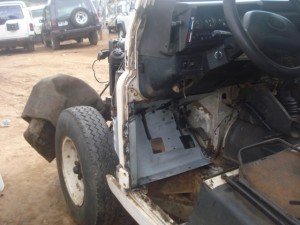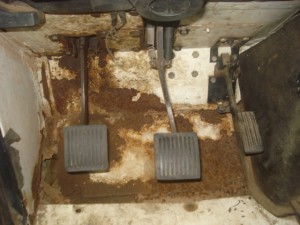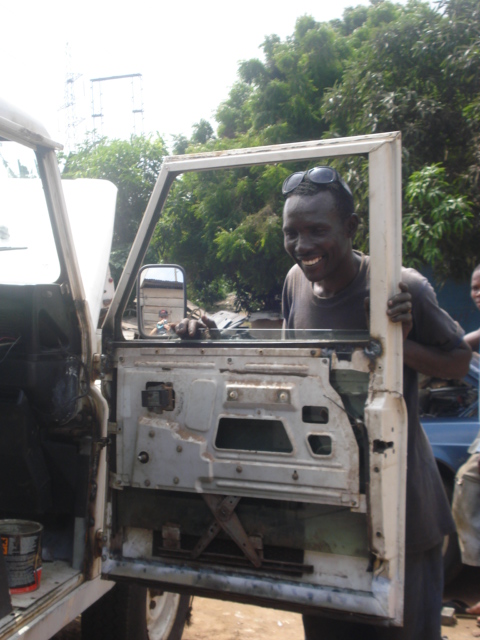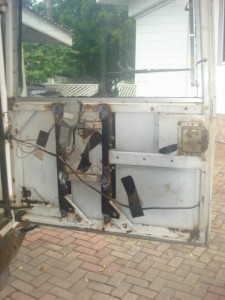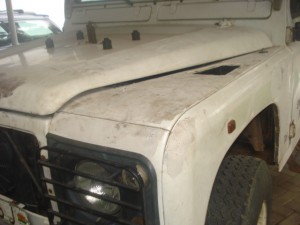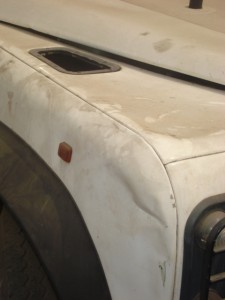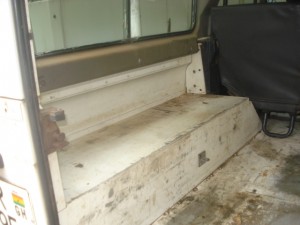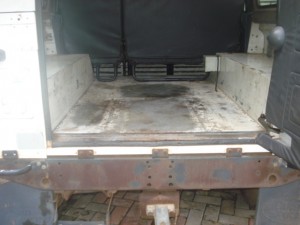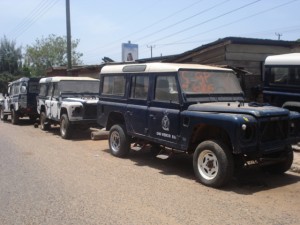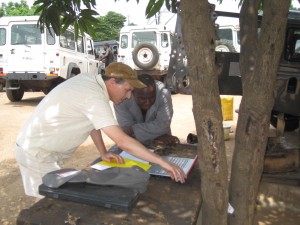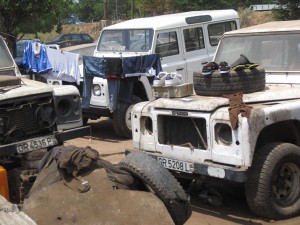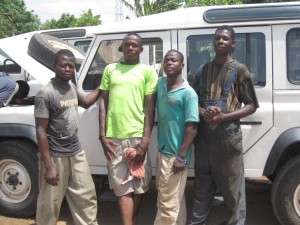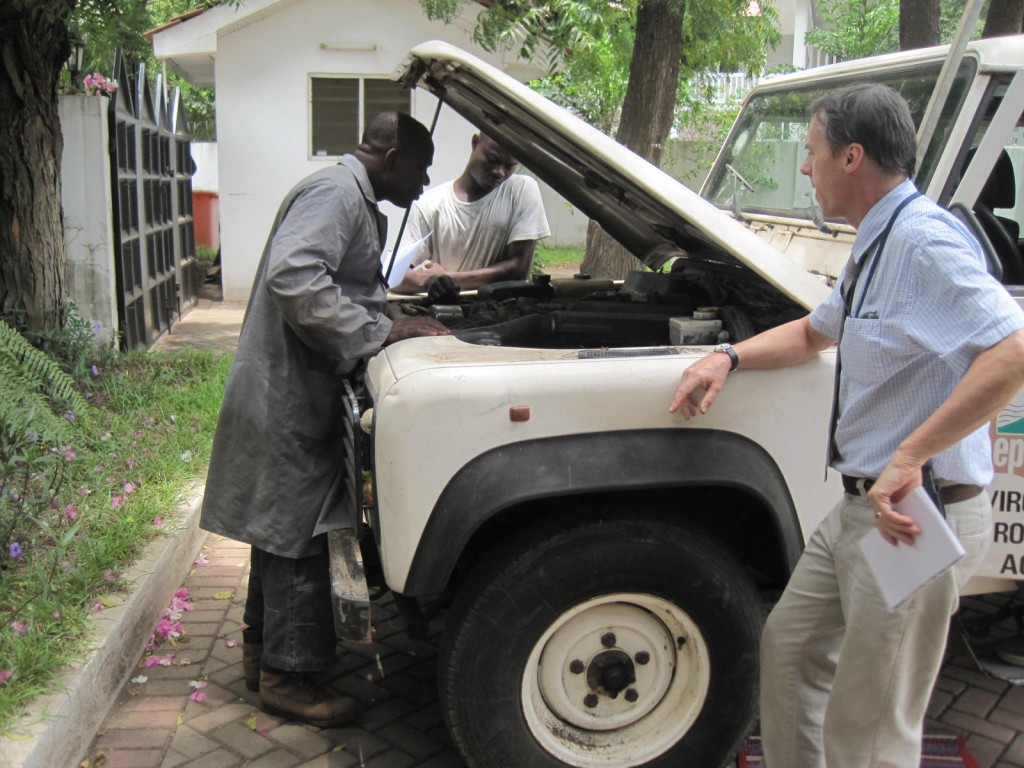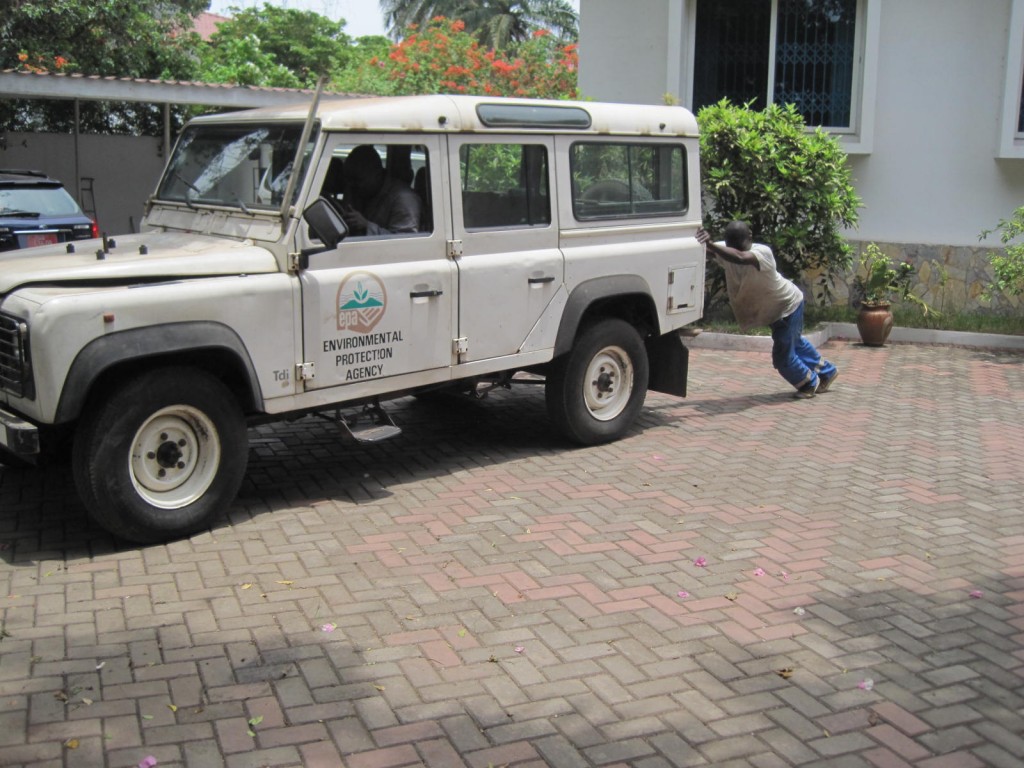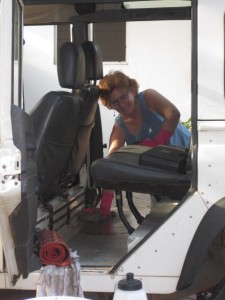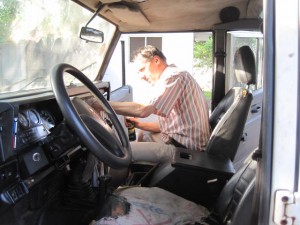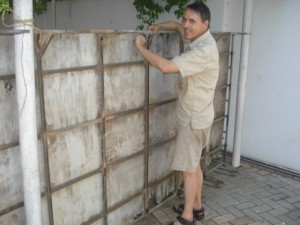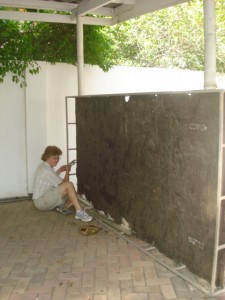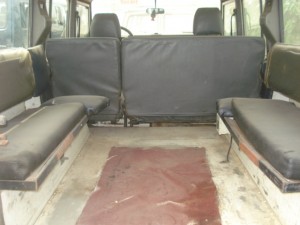Getting my 15-year old Land Rover Defender painted is proving to be full of challenges, one of them is identifying a “sprayer”. Identifying and contacting a painter has been more difficult than for any of the other specialists that I have dealt with. Opere has been my first reference for specialists ranging from mechanics, bodywork and electrical , but the painting is in a different order because, obviously, there is no paint oven under Opere’s tree. Over the course of the past few months whenever I have broached the subject of painting with him to try to nail down that phase of the project he never seemed very interested. Strange because there are frequently one or two Defenders in his yard that look like they are just about to go for painting or have just come back from painting. It was only when he realized I had found the Sikkens shop and had gotten a price he focussed. As he always does, he stressed the importance of ensuring I was going somewhere that would do a good job, but did not promote anyone he knew. When I told him who I was talking to and how much they had quoted he seemed to relax, either because he was satisfied that this was a good place, or that he could not beat the price and still take a cut that would make it worth his effort.
My former colleague Stephan had recommended Sikkens, a name which is well-known for paint around the world, as a place that had done a very good job for him at a reasonable price. He said he had his Defender painted “at Sikkens”, so assumed was a business somewhere in Accra. I saw his Defender and it looked great. Since then everyone, including Opere, has recommended that I use Sikkens Autobase paint, but is clear they are not recommending any one place. Rather they each seemed to have their own favourite “sprayer”, all of whom may use Sikkens paint. I was left wondering if “Sikkens” was a place in Accra as Stephane has led me to believe, or just a brand of paint.
To enlighten myself I turned to Google and searched “Sikkens in Ghana” – there were about a dozen auto paint shops that come up. I noticed that one of these, “Kolours”, was located not too far away from where I live so I went by to have a look and talk to them. The first thing I noticed when I pulled up was that the name “Kolours” did not appear anywhere on the front of the seemingly small storefront operation, rather it featured “SIKKENS”, as if that was the name of the shop. I sent an email to Stephane with description of the location and he confirmed that this was in fact where he had had his vehicle painted. So there is no one “Sikkens” it is rather a network of places that happen to distribute Sikkens paint, and which probably have to undergo certain training and maintain certain quality standards in exchange for the name.
The manager of “Kolours” is Bernard, a personable Ghanaian who each time I go back to look at colours, or ask questions, he says, “I’m ready”, his subtle way of reminding me that it has been well over a month since I first spoke to him and said I was going to bring it in for the paint. The problem is I keep finding reasons to delay, I am not really ready to paint yet.
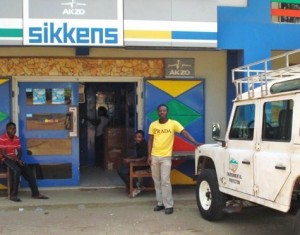
I have had three informal quotes on painting, Opere and Francis have cited numbers, but without the benefit of any close look at the details of what it is I want to do (Iie. everything has to come off before painting, two colours outside, one inside and bottom paint). I have only given those details to Bernard, and his price is the same or only marginally higher than the quick quotes I got from Francis and Opere. What also swings it in Bernard’s favour is that I know one satisfied customer, and the Kolours shop looks very clean and well run. I will use them, but follow Stephane’s advice to monitor the work closely myself. But we are not ready to paint yet, there is still an undercarriage to clean up, and a few niggly pre-paint details.

